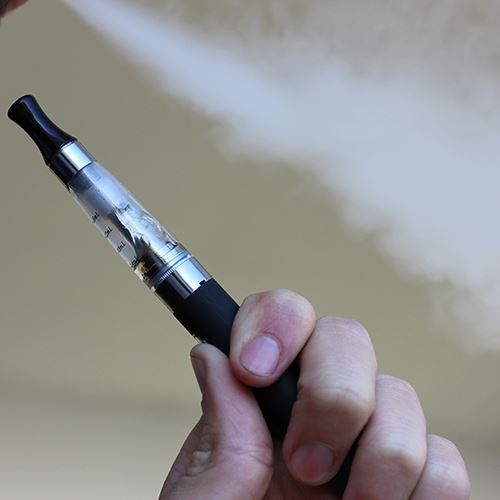- Home
- National Poison Data System
- Track Emerging Hazards
- E-Cigarettes and Liquid Nicotine
 E-CIGARETTES AND LIQUID NICOTINE
E-CIGARETTES AND LIQUID NICOTINE
What is Nicotine? Nicotine is a highly addictive substance found in tobacco products, including cigarettes, cigars, chewing tobacco, e-cigarettes, and pouches. Nicotine poisoning can occur when someone ingests, inhales, or absorbs nicotine through the skin or eyes. It can be particularly dangerous for children and young adults, as they are more susceptible to the effects of nicotine. Why is Nicotine Poisoning Trending? While tobacco products have been a long-standing public health issue, e-cigarette (aka e-cigs, vape pens, vapes) use has continued to gain popularity throughout the last decade. Poison centers began receiving calls about e-cigarettes and liquid nicotine products in 2010, which overlaps with the initial period where these products reached the U.S. market.
The majority of cases reported to poison centers are due to accidental exposures in children less than 6 years old. This reflects the increasing availability of these products in the home due to use by guardians or older siblings. Additionally, in the last 5 years, the FDA has warned companies selling e-cigarette devices made in the shape of toys, foods or cartoons that specifically appeal to use by young people. As of March 31, 2024, Poison Centers have managed 2,152 e-cigarette and liquid nicotine related exposure cases. From 2011 to 2024, Poison Centers have managed 50,103 e-cigarette and liquid nicotine related exposure cases.Treatment and First Aid First Aid:
There's no specific antidote for nicotine poisoning, but medical professionals can provide medications to help support patients experiencing more serious symptoms of nicotine poisoning. Take Action If you suspect nicotine poisoning, contact the Poison Help line immediately. Our poison control experts are available 24/7 every day of the year to offer guidance and support. Here's how to reach us:
Remember, there is always someone available to help. Don't hesitate to call if you have any concerns after using nicotine, OR if you have questions BEFORE using nicotine products. For the Media Please cite this data as “National Poison Data System, America’s Poison Centers.” Any and all print, digital, social, or visual media using this data must include the following: “You can reach your local poison center by calling Poison Help at 1-800-222-1222. To save the number in your mobile phone, text POISON to 301-597-7137. Email Media@PoisonCenters.org or call 703-894-1863 for more information, questions, or to submit a data request. | PREVENTION The best way to deal with nicotine poisoning is to prevent it from happening in the first place. Here are some steps you can take:
RESOURCESFor more safety information, visit the E-Cigarette and Liquid Nicotine Exposures prevention page. |
Important notes about Poison Center dataAmerica's Poison Centers maintains the National Poison Data System (NPDS), the national database of information logged by the country’s Regional Poison Centers serving all 50 United States, Puerto Rico, the District of Columbia, and territories. Case records in this database are from self-reported calls: they reflect only information provided when the public or healthcare professionals report an actual or potential exposure to a substance, request information, or request educational materials. As such:The term “exposure” means someone has had contact with the substance in some way; for example, ingested, inhaled, or absorbed a substance by the skin or eyes, etc. Exposures do not necessarily represent poisonings or overdoses. |